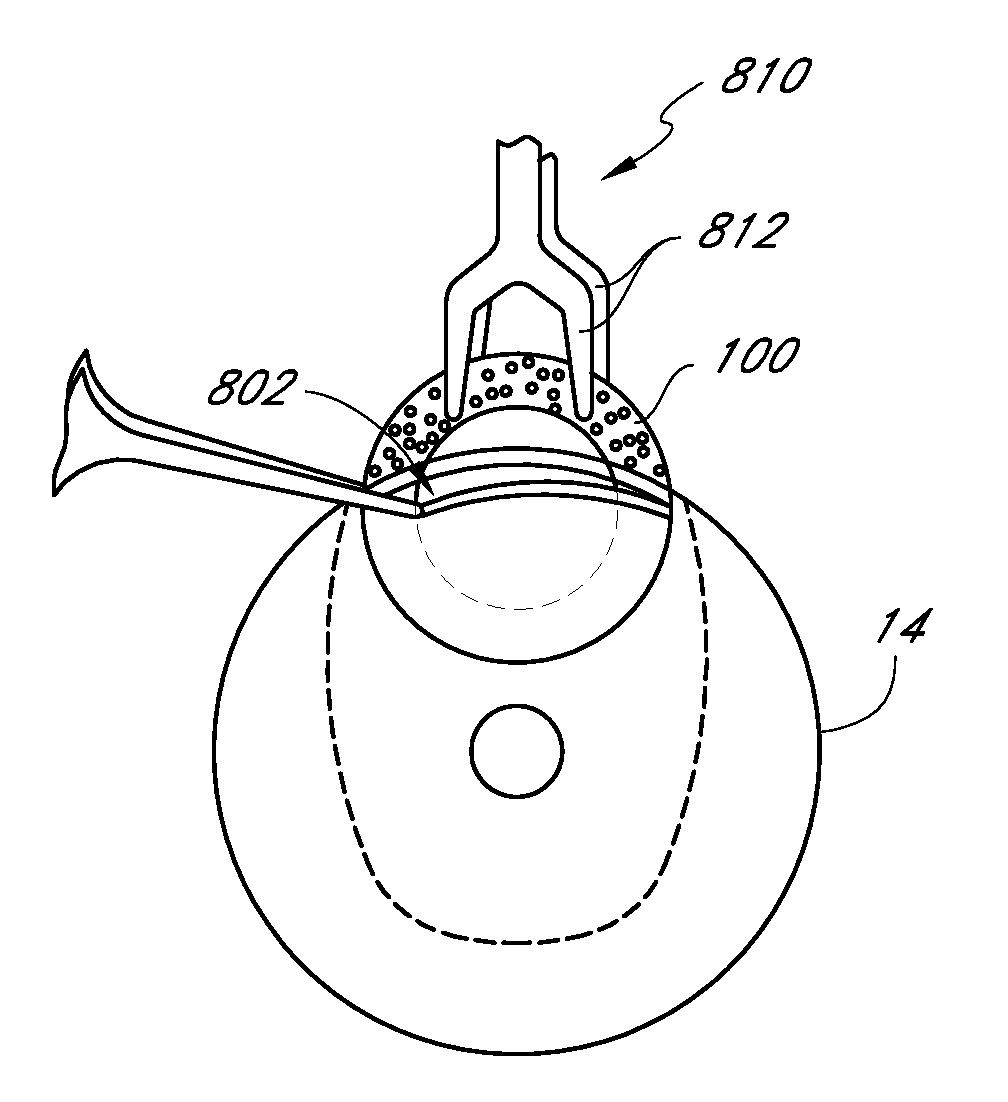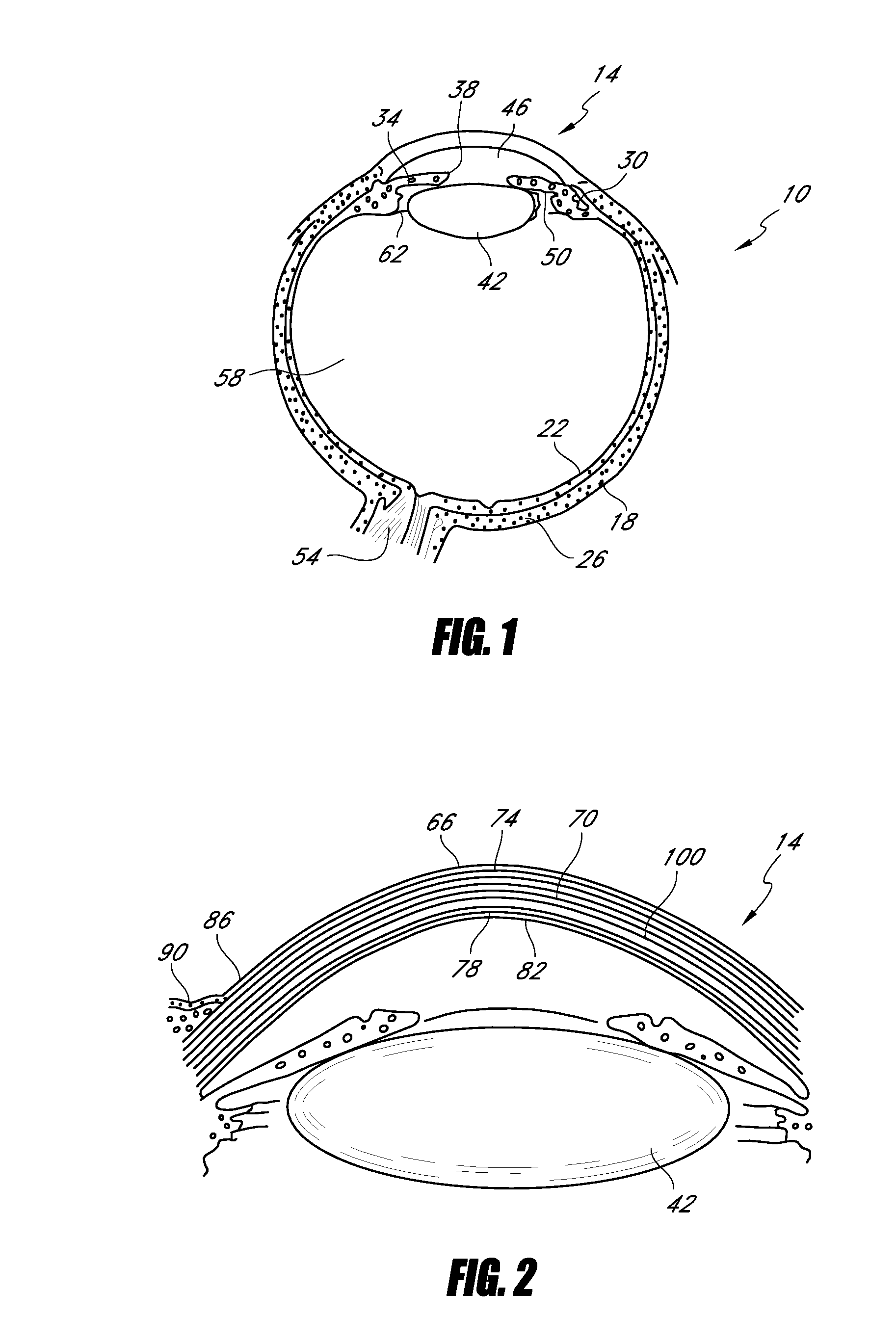Corneal implant for refractive correction
a corneal implant and refractive correction technology, applied in the field of corneal implants for refractive correction, can solve the problems of unfocused image, eye impair the ability of the eye to focus an image, and general inconvenien
- Summary
- Abstract
- Description
- Claims
- Application Information
AI Technical Summary
Benefits of technology
Problems solved by technology
Method used
Image
Examples
Embodiment Construction
[0052]This application is directed to devices and methods that compensate for refractive error of a patient's eye. In some embodiments discussed below, a device that is capable of compensating for such refractive errors is an intra corneal lens. The corneal lenses discussed herein can be deployed within the cornea using a variety of techniques and, as such, the term “inlay” or “corneal inlay” is sometimes used. Other ocular devices and corneal lenses that are suitable for compensating for refractive error or otherwise improving a patient's vision can be placed on or in the cornea, e.g., on or in the epithelium of the eye.
[0053]Prior to discussing the details of various embodiments of such an ocular device, the effects of refractive errors are set forth in connection with FIGS. 1-4. Thereafter, a variety of embodiments that compensate for refractive error, some of which additionally provide increased depth of field, will be discussed in connection with FIGS. 5-12. Various techniques ...
PUM
 Login to View More
Login to View More Abstract
Description
Claims
Application Information
 Login to View More
Login to View More - R&D
- Intellectual Property
- Life Sciences
- Materials
- Tech Scout
- Unparalleled Data Quality
- Higher Quality Content
- 60% Fewer Hallucinations
Browse by: Latest US Patents, China's latest patents, Technical Efficacy Thesaurus, Application Domain, Technology Topic, Popular Technical Reports.
© 2025 PatSnap. All rights reserved.Legal|Privacy policy|Modern Slavery Act Transparency Statement|Sitemap|About US| Contact US: help@patsnap.com



